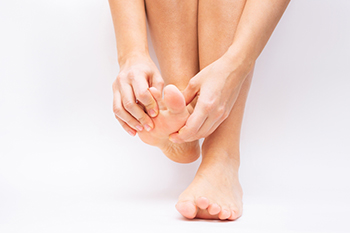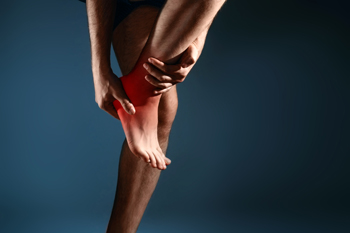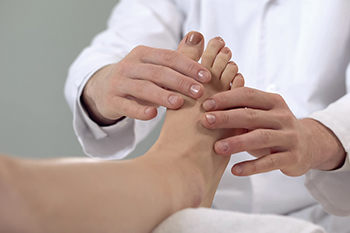Items filtered by date: September 2022
Hair on the Toes

Taking care of the feet ought to be an essential component of anyone’s daily or weekly self-care routine. Sometimes, if someone is caring for and pampering their feet, they might notice hairs growing on the toes, especially the big toe. Although this might seem alarming and unsightly, hair on the toes does not indicate anything problematic in many cases. If anything, hair on the toes indicates good blood circulation. If you do not want hair on your toes, you might safely remove the hairs by using a standard shower razor and shaving gel. Importantly, if you feel as though the hair on your toes is more than normal (especially if you have a kind of adrenal or ovarian disorder), you might consider seeking out medical attention. Contact a podiatrist today to learn more about hair on the toes.
Everyday foot care is very important to prevent infection and other foot ailments. If you need your feet checked, contact Gary J. Kaiserman, DPM from Achilles Footcare Center. Our doctor can provide the care you need to keep you pain-free and on your feet.
Everyday Foot Care
Often, people take care of their bodies, face and hair more so than they do for their feet. But the feet are a very important aspect of our bodies, and one that we should pay more attention to. Without our feet, we would not be able to perform most daily tasks.
It is best to check your feet regularly to make sure there are no new bruises or cuts that you may not have noticed before. For dry feet, moisturizer can easily be a remedy and can be applied as often as necessary to the affected areas. Wearing shoes that fit well can also help you maintain good foot health, as well as making it easier to walk and do daily activities without the stress or pain of ill-fitting shoes, high heels, or even flip flops. Wearing clean socks with closed shoes is important to ensure that sweat and bacteria do not accumulate within the shoe. Clean socks help to prevent Athlete’s foot, fungi problems, bad odors, and can absorb sweat.
If you have any questions please feel free to contact our offices located in Forest Lane and West Kiest Boulevard Dallas, TX . We offer the newest diagnostic and treatment technologies for all your foot and ankle needs.
Heel Pain Can Be Treated!
Surgery for Bunions

A bunion is a foot deformity that manifests itself as a bony bump near the joint of the big toe. Importantly, bunions might also form at the base of the pinky toe as well, which are known as bunionettes. If you have a bunion, you may experience any number of symptoms, including swelling at the affected joint, redness, and possibly pain. If you have a severe case of bunions that does not respond to other forms of treatment, undergoing a surgical procedure to treat your bunions may possibly be an option. Such a procedure typically requires up to six months of recovery time, and it is primarily concerned with reducing pain and bringing the metatarsophalangeal joint back into alignment. The different types of relevant surgical procedures are known as an osteotomy, arthrodesis, and exostectomy, among others. If you have bunions and think you may be a candidate for bunion surgery, contact a podiatrist today.
If you are suffering from bunions, contact Gary J. Kaiserman, DPM of Achilles Footcare Center. Our doctor can provide the care you need to keep you pain-free and on your feet.
What Is a Bunion?
A bunion is formed of swollen tissue or an enlargement of boney growth, usually located at the base joint of the toe that connects to the foot. The swelling occurs due to the bones in the big toe shifting inward, which impacts the other toes of the foot. This causes the area around the base of the big toe to become inflamed and painful.
Why Do Bunions Form?
Genetics – Susceptibility to bunions are often hereditary
Stress on the feet – Poorly fitted and uncomfortable footwear that places stress on feet, such as heels, can worsen existing bunions
How Are Bunions Diagnosed?
Doctors often perform two tests – blood tests and x-rays – when trying to diagnose bunions, especially in the early stages of development. Blood tests help determine if the foot pain is being caused by something else, such as arthritis, while x-rays provide a clear picture of your bone structure to your doctor.
How Are Bunions Treated?
- Refrain from wearing heels or similar shoes that cause discomfort
- Select wider shoes that can provide more comfort and reduce pain
- Anti-inflammatory and pain management drugs
- Orthotics or foot inserts
- Surgery
If you have any questions, please feel free to contact our offices located in Forest Lane and West Kiest Boulevard Dallas, TX . We offer the newest diagnostic and treatment technologies for all your foot care needs.
How Lupus Can Affect the Feet

Lupus is an autoimmune disease that attacks tissues throughout the body, including the feet. It can attack muscles, blood vessels, tendons, and skin around the joints of the feet, and may cause joint deformity. This can be referred to as deforming arthropathy, and the most common form is known as Jaccoud’s type arthropathy. Bearing body weight on the feet with deformed joints can be a major source of pain. Lupus can cause the feet to swell, become numb, and ache due to arthritis. This can make it difficult for a person to move and sleep, which can cause other lupus symptoms to worsen. Feet can also turn blue from sensitivity to cold, which signals a vascular disorder known as Raynaud’s phenomenon. This is when the autoimmune system attacks small blood vessels, causing them to constrict when exposed to cold. Swelling and numbness can result, and pressure on the nerves of the feet can also cause pain. Sores and blisters that develop on the feet of those patients who have lupus can be slow to heal. This may be a result of the immune system suppressing drugs that keep the disease controlled. If the skin opens from these sores, it may be prone to infection. If you have lupus and are experiencing these symptoms in your feet, please see a podiatrist who can help with treatment options that might help restore pain, and free movement and functioning.
When dealing with systemic disease of the feet, it is extremely important to check the affected areas routinely so that any additional problems are caught quickly. If you have any concerns about your feet and ankles contact Gary J. Kaiserman, DPM from Achilles Footcare Center. Our doctor will assist you with all of your podiatric needs.
Systemic Diseases of the Feet
Systemic diseases affect the whole body, and symptoms usually are displayed in the feet. This condition can make a patient’s ability to walk unbearable. Systemic diseases include gout, diabetes mellitus, neurological disorders, and arthritis.
Gout – is caused by an excess of uric acid in the body. Common symptoms include pain, inflammation, and redness at the metatarsal/phalangeal joint of the base big toe. Gout can be treated by NSAIDs to relieve pain and inflammation, and other drugs that lower the acid levels in the body.
Diabetes mellitus – is an increase in the level of blood sugar that the body cannot counteract with its own insulin. Failure to produce enough insulin is a factor in Diabetes.
Diabetes of the Feet
Diabetic Neuropathy – may lead to damaged nerves and affect the feet through numbness and loss of sensation.
Peripheral Vascular Disease – can restrict the blood flow to the feet, and often times lead to amputation of the feet.
If you have any questions please feel free to contact our offices located in Forest Lane and West Kiest Boulevard Dallas, TX . We offer the newest diagnostic and treatment technologies for all your foot and ankle needs.
Who Is a Podiatrist?

Different kinds of doctors specialize in a particular part of the body. For example, otolaryngologists specialize in the ear, nose, and throat, while optometrists specialize in treating the eyes. Podiatrists are doctors that primarily focus on all things related to the feet. Podiatrists must complete a rigorous academic course of study, first obtaining a bachelor’s degree and then earning a degree in Doctor of Podiatric Medicine, referred to as DPM. You might find podiatrists working in a variety of environments. For example, you could find them working in hospitals, private or group practice settings, the armed services, or even in the U.S. Public Health Service. A podiatrist’s work is pertinent because the feet are critical parts of the human body. Not only are feet responsible for movement and balance, but they must also bear the full weight of a human’s body. Since the feet are vulnerable to conditions like plantar fasciitis, plantar warts, athlete’s foot, Morton’s neuroma, and tarsal tunnel syndrome, a podiatrist’s work is essential. If you are interested in taking good care of your feet or you have an existing foot condition, contact a podiatrist.
If you are experiencing pain in the feet or ankles, don’t join the stubborn majority refusing treatment. Feel free to contact Gary J. Kaiserman, DPM from Achilles Footcare Center. Our doctor can provide the care you need to keep you pain-free and on your feet.
What Is a Podiatrist?
Someone would seek the care of a podiatrist if they have suffered a foot injury or have common foot ailments such as heal spurs, bunions, arch problems, deformities, ingrown toenails, corns, foot and ankle problems, etc.
Podiatric Treatment
A podiatrist will treat the problematic areas of the feet, ankle or lower leg by prescribing the following:
- Physical therapy
- Drugs
- Orthotic inserts or soles
- Surgery on lower extremity fractures
A common podiatric procedure a podiatrist will use is a scanner or force plate which will allow the podiatrist to know the designs of orthotics. Patients are then told to follow a series of tasks to complete the treatment. The computer will scan the foot a see which areas show weight distribution and pressure points. The podiatrist will read the analysis and then determine which treatment plans are available.
If you have any questions please feel free to contact our offices located in Forest Lane and West Kiest Boulevard Dallas, TX . We offer the newest diagnostic and treatment technologies for all your foot and ankle needs.

